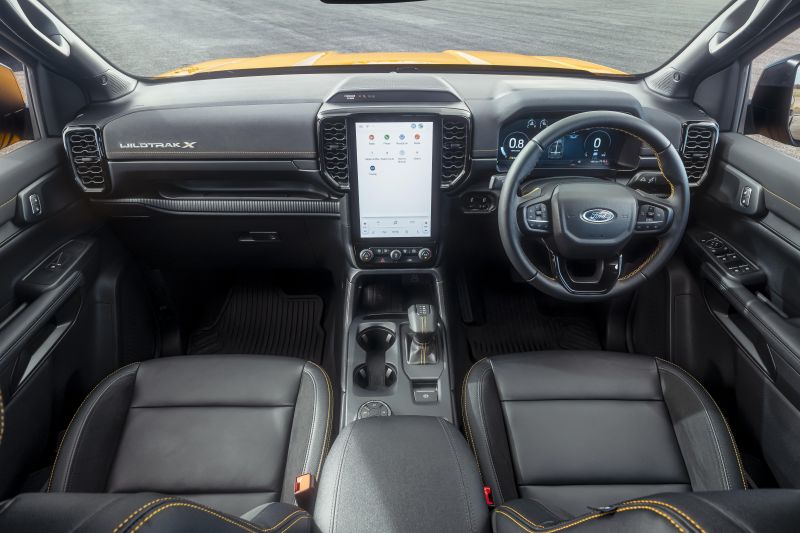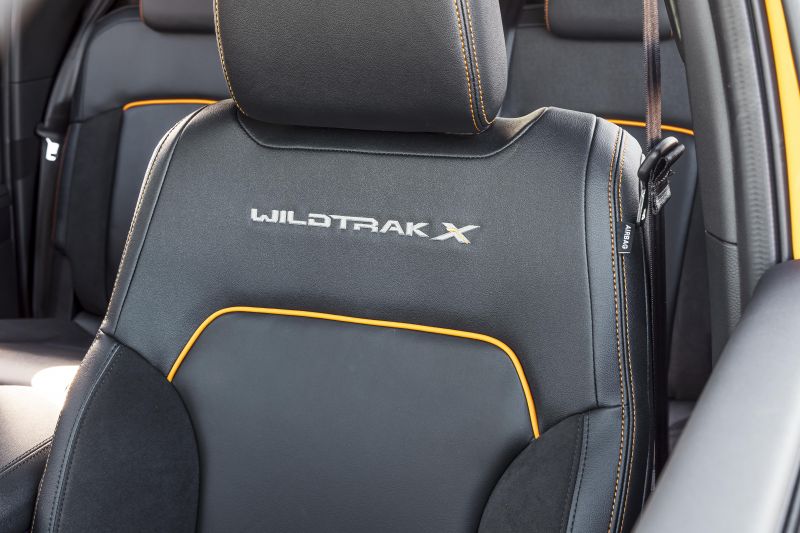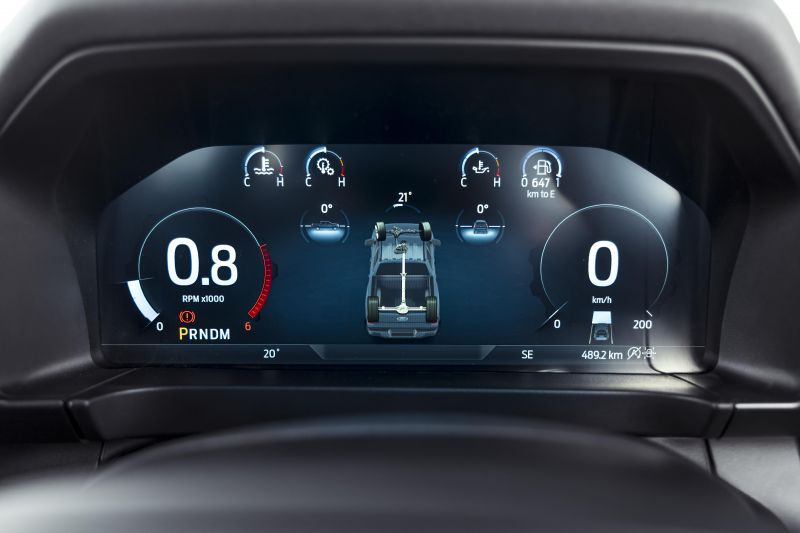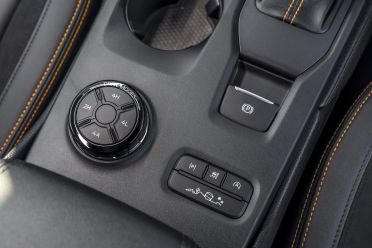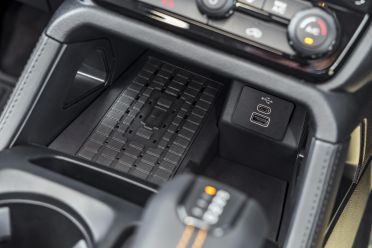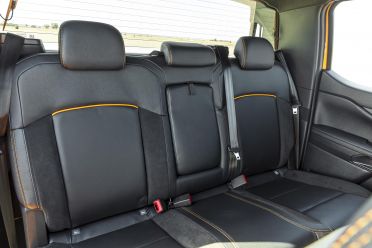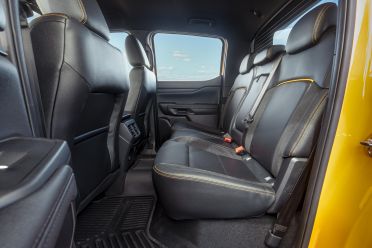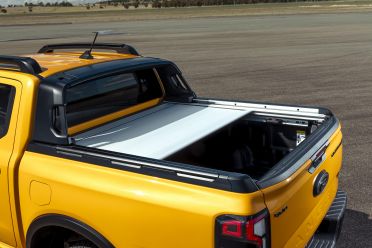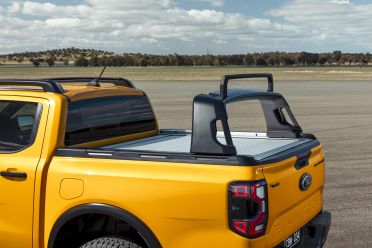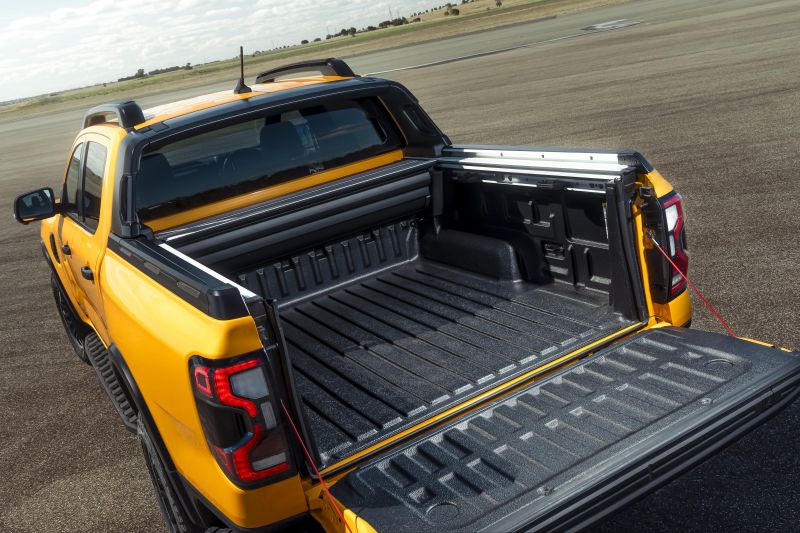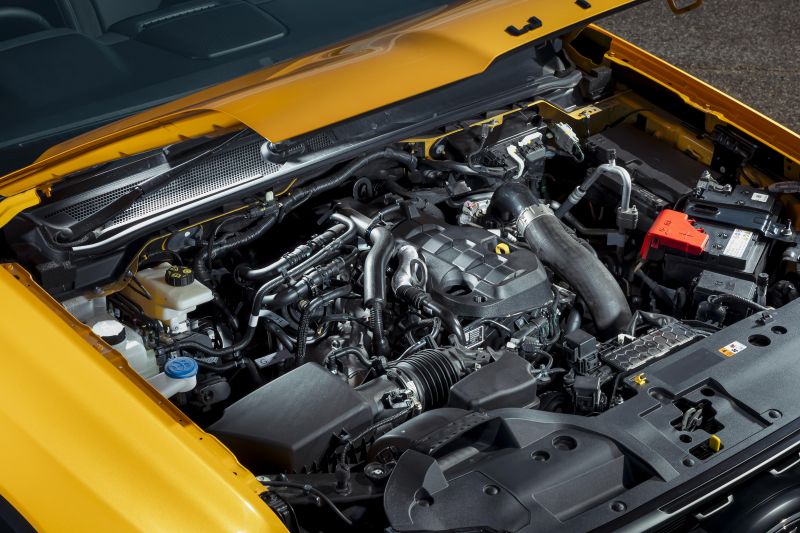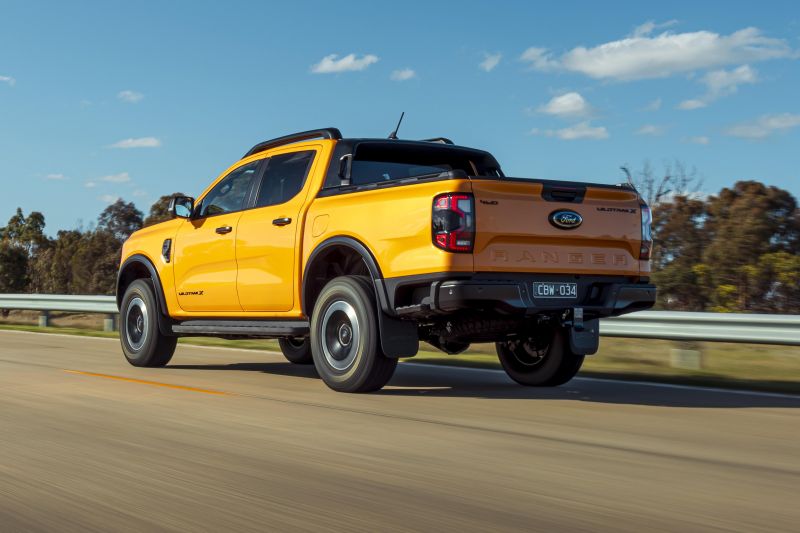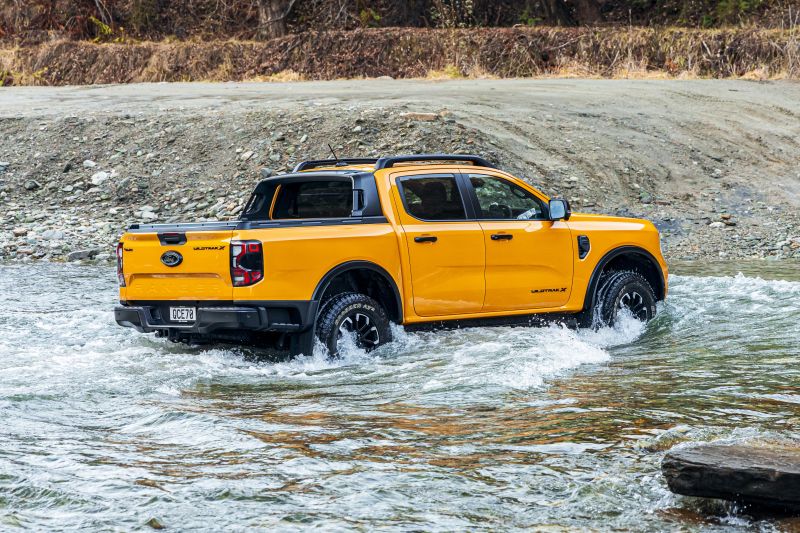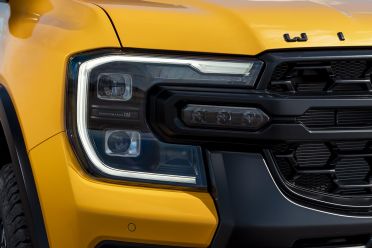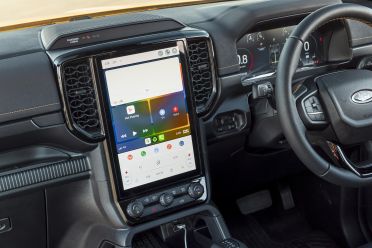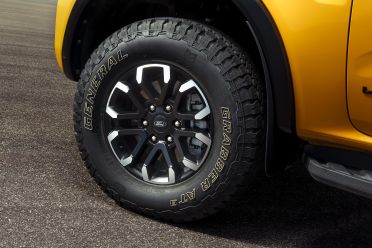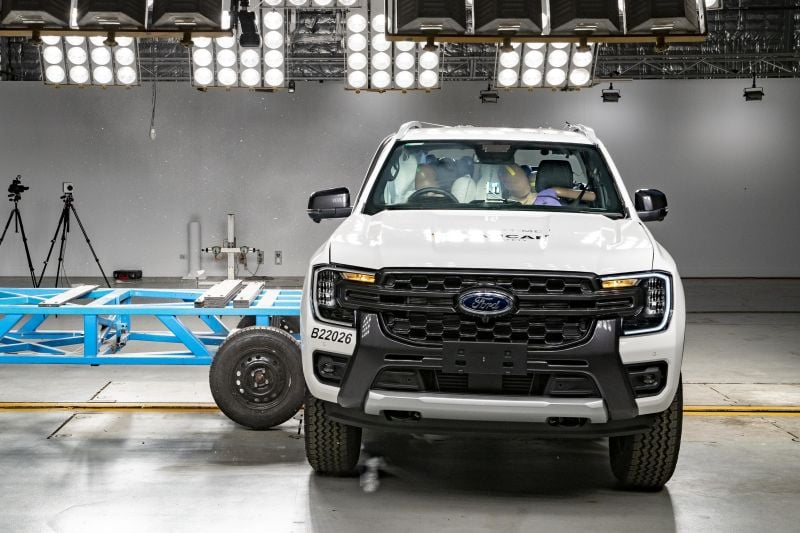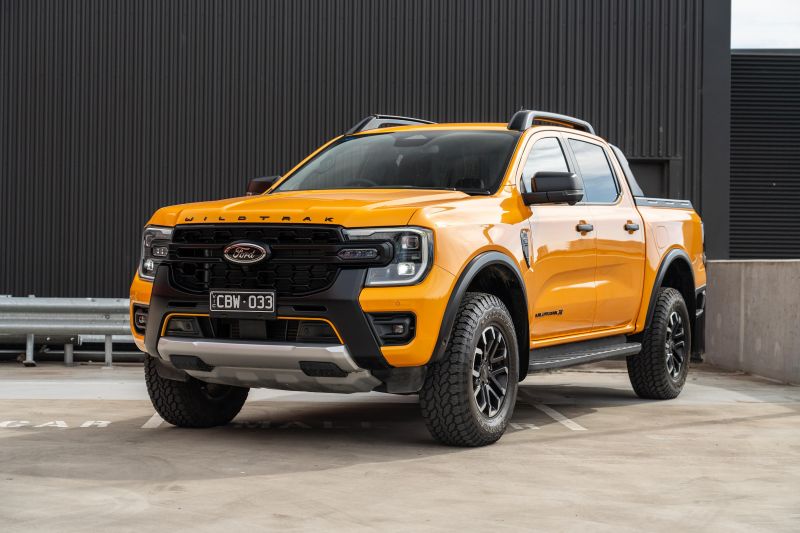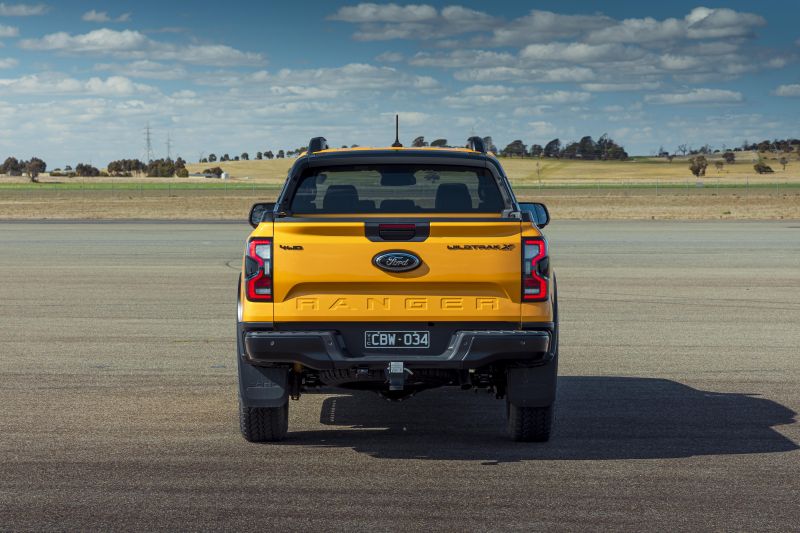What happens when you cross a Ford Ranger Wildtrak with a Raptor? You get the Wildtrak X.
This limited-edition Ranger is designed to sit in a Goldilocks zone, offering a more sophisticated suspension setup for off-roaders than the leaf-sprung Wildtrak… without sacrificing load-lugging and towing capacity like the Raptor does.
The track is 30mm wider both front and rear than the Wildtrak, and you get 26mm more ground clearance straight off the bat. Eagle-eyed Ranger fans will also spot the new off-road grille with an integrated LED light bar, among other off-road oriented bits and pieces.
Power comes from a 2.0-litre engine exclusively, but unlike the regular Wildtrak this Bi-Turbo has full-time four-wheel drive that can be activated on sealed roads.
Ford claims all those changes add up to a ute that’s perfect for touring and towing. We got behind the wheel to find out if there’s any substance to those claims.

How much does the Ford Ranger cost?
The Wildtrak X sits between the regular Wildtrak V6 and the more luxurious Platinum V6 in the Ranger line-up, with a sticker price of $75,990 before on-road costs.
That’s $7000 more than the equivalent Wildtrak, given the Wildtrak X has 2.0-litre power.
As for rivals? It’s priced in line with the related Volkswagen Amarok Panamericana, which isn’t quite as off-road oriented but counters with turbo V6 power.
The range-topping Toyota HiLux GR Sport is $73,990 before on-roads.
- 2024 Ford Ranger Wildtrak
- Dual-cab pick-up, 2.0-litre bi-turbo 4×4: $68,490
- Dual-cab pickup, 3.0-litre turbo-diesel V6 4WD: $72,390
- 2024 Ford Ranger Wildtrak X
- Dual-cab pickup, 2.0-litre bi-turbo 4WD: $75,990
- 2024 Ford Ranger Platinum
- Dual-cab pickup, 3.0-litre turbo-diesel V6 4WD: $78,190
- 2024 Ford Ranger Raptor
- Dual-cab pickup, 3.0-litre twin-turbo petrol V6 4WD: $87,990
All prices exclude on-road costs. A full price list for all Ranger variants is available here.
What is the Ford Ranger like on the inside?
Where the outside of the Wildtrak X looks substantially different to a regular Wildtrak, the differences inside are a bit more subtle.
You get the 12.4-inch digital instrument cluster from the Ranger Platinum and Raptor, a B&O premium sound system, and an overhead bank of auxiliary switches for aftermarket accessories, along with new leather and suede-trimmed seats.
Suede features elsewhere on the glovebox, instrument cluster hood, door trim, and centre console rails, and there’s a smattering of Wildtrak X badges on hand to remind you what you’re driving.
With a tilting and telescoping wheel, well-padded seats that accomodate tall drivers, and plenty of storage up front, this is still easily the best ute out there if you’re planning to spend long stints on the highway – short of a full-sized American pickup, anyway.
As is the case in the regular Wildtrak, the X has been nicely elevated among the broader range inside. There are still some hard plastics that point to its commercial roots, but with the seat heater cranking and stereo pumping, bum sat on the suede and leather seats, you’re not going to feel hard done by.
Ford has already fiddled with the infotainment tech in the Ranger. The Wildtrak X follows the Platinum in featuring a redesigned infotainment system with cleaner icons and a layout designed to be simpler to navigate than before.
The software looks and feels modern, and Ford has retained some physical buttons for frequently-used climate functions, so it’s easy to fiddle with the temperature on the move.
The menu structure is logical, and the amount of screen real estate means key information isn’t buried. It’s possible to have your mapping, radio preferences, and climate information on display all at once, for example.
Wireless Apple CarPlay connected flawlessly for us, although on longer trips we used USB-C to preserve battery. The slightly laggy behaviour of the pre-update system appears to have been ironed out, which is a real positive.
The move to a 12-inch digital dashboard is a welcome one – and one that should spread further down the range. It’s a much more polished setup than the standard unit, with neat graphics and a decent range of options… but still no integrated mapping.
FordPass Connect is standard on the Ranger, and allows owners to lock or unlock and remotely start their car, check fuel levels, find the car, activate the exterior lighting, or even check the indicators on your trailer are working.
It feels like Ford has really thought about how to value-add with its app in the Ranger, rather than just translating passenger car technology into a vehicle with a different set of goals.
Storage space around the cabin is plentiful. The central bin is deep, the door pockets have plenty of room, there are two cupholders on the transmission tunnel, and the slot beneath the dashboard is huge. The slot ahead of the gear selector is perfect for a large McDonalds fries – no chip crisis here.
The extra pop-up glovebox on the passenger side (it’s not standard range-wide) is handy, while the overhead switch console on our tester (part of the Premium Pack) is a neat way to save owners who plan to add powered accessories from having to MacGyver their own switches into the cabin.
Rear seat space is fine, but doesn’t feel like much of a step on from what was previously on offer. Leg- and headroom are both acceptable, and the bench is broad enough that three tradies will be able to travel on short journeys without wanting to kill each other afterwards.
Anyone who wants to fit a child seat will need to be patient, though. As is the case in most of these dual-cab utes, the fact the top tether point is up against the rear bulkhead makes it hard to attach a finicky seat anchor.
The inclusion of air vents is good, the fact Ford has fitted a 12V slot but no USB ports on the rear of the transmission tunnel feels like a missed opportunity.
The 12V is versatile when it comes to accessories, but you’ll need to plug in a dongle to charge iPads back there.
Along with the requisite ISOFIX and top-tether child seat points, the Ranger features a fold-down central armrest, damped rear grab handles, and storage bins beneath the seat bases.
Dual-cab Ranger models have a wider tub than before, billed as sufficient to flat-stow a 1200mm x 800mm pallet.
It’s simple to access, with sturdy box steps fitted just behind the tyres.
The counterbalanced tailgate (with mounting points for vices and even a pre-drawn ruler) can be lifted with a finger, there are six tie-down hoops in the bed, and the box sides have structural attachment points for canopies pre-fitted.
This Wildtrak X borrows its clever rack from the Platinum. When not in use, it looks the same as the sail plane on any other Ranger – but it can also be slid on tracks to the rear of the tray, where raising another pop-up part allows you to use it as a rack for carrying long items like kayaks in conjunction with the roof racks above the cabin.
It’s a neat solution to a problem I know a few dual-cab owners face, although it’ll be interesting to see how the rack (and specifically its sliding rails) hold up to a lifetime of sand, dirt, rain, and sun.
What’s under the bonnet?
The Ranger Wildtrak X is offered exclusively with the 2.0-litre bi-turbo four-cylinder diesel engine which produces 150kW of power and 500Nm of torque, mated with a 10-speed automatic transmission.
It’s the first Ranger variant to require AdBlue in Australia.
The Wildtrak X uses a full-time four-wheel drive system with a 4A mode that can be used on pavement, instead of the part-time four-wheel drive system found in all other Ranger Bi-Turbo variants.
Unlike the off-road oriented Raptor, the Wildtrak X maintains a 3500kg towing capacity and a 1082kg payload.
The fuel tank holds 80 litres, and claimed fuel economy is 8.7 litres per 100km on the combined cycle. We saw 9.9 litres per 100km on a drive loop.
How does the Ford Ranger drive?
There’s an immediate difference between the Wildtrak X and the regular Ranger on sealed roads.
Its more off-road oriented suspension setup, combined with the all-terrain tyres and their stiffer tread blocks, makes for a tighter ride over potholes and speed bumps when the tray is empty. Anyone who’s driven the latest Raptor will be familiar with the feeling, which isn’t uncomfortable or unrefined – it’s just… more purposeful.
Much of the experience here is familiar. The steering is light and direct in the city, making what’s a big ute easy to place in tight spaces, and the Bi-Turbo engine is refined by the standards of most diesel dual-cab utes.
It starts with a bit of a clatter, but once it’s warm you don’t get too many unseemly noises or truck-ish sounds behind the wheel.
Put your foot down and the four-cylinder engine packs a punch that defies its 2.0-litre displacement. Put your foot down and, thanks to the 10-speed automatic’s tightly spaced ratios, is rarely caught outside of its torque band.
Although it can occasionally be a bit stilted, shuffling down one, two, three gears when you catch it napping, the updated 10-speed auto in the new Ranger is more decisive than before, which pays dividends when you’re towing – especially in Tow/Haul mode.
The smooth idle start/stop system makes a difference in the city, although plenty of owners will no doubt turn it off immediately.
The extra height and width of the Wildtrak X relative to a normal Wildtrak doesn’t make all that much of a difference in daily driving, meaning it’s still a pretty easy ute to pilot in tight carparks or city streets. It’s one of the easiest utes to pilot in town, and the electric power steering system feels more direct than before.
In the old model you needed to twirl, twirl, and twirl the wheel some more at low speeds; the new model requires smaller inputs.
At higher speeds, where Ford expects the Wildtrak X to spend a chunk of its time, the wider track and more touring-focused suspension makes it feel more surefooted without a load on board.
Over the sort of crests and dips that have the standard car feeling a bit bouncy, the X does a better job controlling its weight. A common criticism of dual-cab utes is the they can’t hide their commercial roots on rough roads; although the Wildtrak X isn’t quite an SUV with a tray it does feel nicely settled by ute standards.
Often, swapping road-oriented highway terrain tyres for knobblier rubber aimed at off-roading brings about a significant increase in road noise – but the X remains a quiet, composed cruiser.
Ford’s active driver assists are some of the best in the business. The lane-keeping assist keeps you between the white lines on the highway and holds the car nicely in its lane in tricky conditions, while the adaptive cruise control smartly maintains a gap to the car in front.
They make this an easy car in which to cover long distances, while the blind-spot monitoring system that can account for a trailer will be welcome for anyone who’s coming to grips with a massive caravan.
We’d suggest anyone buying a Wildtrak X will be interested in off-roading, but even if you’re a first timer the Ranger’s off-road technology is easy to approach.
Any inputs to the off-road dials on the transmission tunnel bring clear, bright animations on the instrument cluster or central screen to keep less experienced drivers abreast of what’s happening, and the four-wheel drive system switches modes quickly.
Hill descent control keeps an iron grip on your momentum and doesn’t grind or crunch like older systems, and the surround-view camera allows you to leave the front camera on while you’re off-roading, and presents a high-resolution view of the trail ahead featuring guidelines.
What do you get?
Equipment unique to the Wildtrak X includes:
- 17-inch alloy wheels
- General Grabber AT3 all-terrain tyres
- Bilstein position-sensitive dampers with nitrogen-charged external reservoir
- Off-road grille with integrated LED lights
- Steel bash plate
- Cast aluminium side steps
- Black exterior highlights
- Wildtrak X badging
- Matrix LED headlights
- Flexible Rack System
- 12.4-inch digital instrument cluster
- B&O premium sound system
- Overhead auxiliary switch bank
- Leather-accented upholstery with Miko suede
- Terra suede dashboard
- Trail Turn Assist
- Trail Control
That’s atop the following equipment, which is standard on the Wildtrak:
- 8.0-inch digital instrument cluster
- 10.1-inch Sync4 portrait touchscreen infotainment system
- 18-inch Boulder Grey alloy wheels
- 18-inch Boulder Grey alloy spare wheel
- Goodyear Wrangler all-terrain tyres
- Unique Wildtrak sports bar
- Power tub roller shutter
- Cargo management system
- Unique Wildtrak front grille with mesh pattern and Boulder Grey accents
- Exterior side mirrors with puddle lamps and zone lighting
- Roof rails
- Aluminium load box tie down rails
- 12-inch touchscreen infotainment system
- Interior ambient lighting
- Pull-out dash-mounted cupholders
- Unique Wildtrak leather accented upholstery
- Heated front seats
- Eight-way electrically adjustable front seats
- Surround-view camera
- Automated parking assist
- Dual-zone climate control
- Satellite navigation
- Voice assistant
- Integrated trailer brake controller
- Leather-wrapped steering wheel
- Keyless entry with push-button start
- Electrochromatic mirror
- Rain-sensing window wipers
- Adaptive cruise control with lane-centring and stop/go
Is the Ford Ranger safe?
The Ford Ranger has a five-star ANCAP safety rating based on testing carried out in 2022.
Category scores included 84 per cent for adult occupant protection, 93 per cent for child occupant protection, 74 per cent for vulnerable road user protection, and 83 per cent for safety assist.
The 2024 Ford Ranger line-up comes standard with the following safety equipment:
- Nine airbags
- incl. driver, passenger knee airbags
- incl. front-centre airbag
- Autonomous emergency braking (AEB)
- Car, Pedestrian, Cyclist detection
- Junction assist
- Adaptive cruise control
- Blind-spot assist
- Rear cross-traffic alert (Pick-up)
- Lane departure warning
- Lane keep assist
- Road edge detection
- Reversing camera (Pick-up)
- Rear parking sensors (Pick-up)
- Trailer Coverage (with optional Tow Pack)
Ranger XLT adds:
- Adaptive cruise control incl. stop/go
- Blind-spot monitoring incl. Trailer Coverage
- Lane centring assist
- Traffic sign recognition
- Tyre pressure monitoring
The optional Touring Pack adds a surround-view camera, while stepping up to the Wildtrak and above adds the Active Park Assist 2.0 system.
How much does the Ford Ranger cost to run?
The Ranger is covered by a five-year, unlimited-kilometre warranty, like the broader Ford range.
Logbook servicing is required every 12 months or 15,000 kilometres – whichever comes first.
The first four visits are capped at $329, which equals $1316 for four years or 60,000km of maintenance.
CarExpert’s Take
The Ranger remains the class leader in the dual-cab ute world – at this point, Ford is just filling in the niches.
The new Ranger Platinum is a more luxurious take on the dual-cab ute, while the Wildtrak X on test here is aimed at the sort of person who’d immediately take their Wildtrak to ARB and upgrade the suspension, carrying systems, and lighting.
Based on that brief, the Wildtrak X is a winner. Ford has picked its upgrades wisely, and the price seems right. It’s not relevant to how the car performs, but Cyber Orange is also a winner – it’s a stunning colour in person.
Beware though, the Wildtrak X isn’t for everyone. Its adventure-focused upgrades make for a firmer ride in the city, where we know plenty of owners spend most of their time.
We’d argue those punters would be better served saving their money and opting for the regular Wildtrak, or even a Sport V6.
Click an image to view the full gallery.
MORE: Everything Ford Ranger
BUY: Ford Ranger












